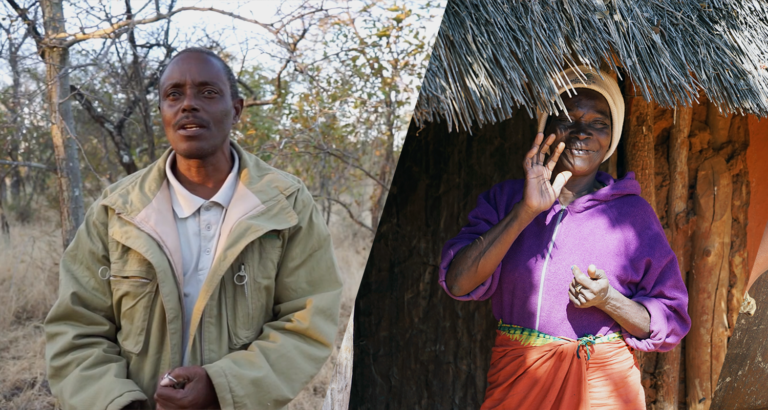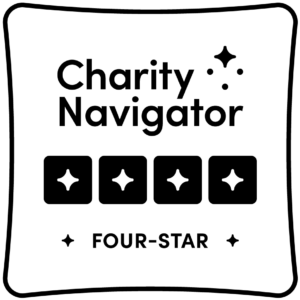Why humanity cannot manage complexity successfully.
This is the fourth in a series of blog posts affecting everyone in the world. In the first I used the analogy of team humanity in one boat that is sinking because while dealing with millions of leaks we are not paying any attention to the greatest leak. The second post discussed the concept of complexity, which is so often misunderstood, in society and the third post why managing complexity is the single greatest need (amongst trillions of pressing needs) facing humanity. In this 4th blog we will discuss why humans have never and still cannot manage complexity.
Moving on as I would like to do to discuss the truly exciting future, that is now possible by managing complexity, I have found simply does not work. This is because almost all scientists and society do not even recognizing management is the problem. We are still blaming our fossil resources and livestock for causing desertification and climate change. No resources can ever be the cause of a problem – our management leading to burning fossil resources as cheap energy, or running livestock as we do in industrial factory settings, and as we do on most ranches causing climate change is a management problem. Unless we first recognize a problem exists I have found no one is the least interested in a solution to what they feel is a non-existent problem! So now lets discuss why we are unsuccessful at managing complexity so vital to human survival.
Management involves making decisions. We believe we have a great many ways of doing so – scientifically, democratically, dictatorially, collaboratively, intuitively, etc. and we believe there are a great many different management methods, which is true. However, we need to unpackage these beliefs to see what lies beneath them. Only by doing so can we begin to understand why we can put a man on the moon but cannot manage complexity successfully.
Tool using animals.
First, we need to recognize we are a ‘tool-using’ animal. While many species can use sticks, shells, stones, etc. as tools, only humans and some birds can make a tool. Over millions of years of our genetic development as a tool-making animal we kept improving tools (our first technology) by fastening stones to sticks, chipping stones and sharpening sticks. We could no more affect our environment than apes, otters, vultures, crows or other tool users. Then we discovered how to use, followed by how to make, fire. From then on we could heat stones and entered the copper, bronze and iron ages, advancing our earliest ‘technology’ mostly around the development of weapons till we enjoy all the technological wonders of today. Everything around you as you read including the building you are in and clothes you wear was only made possible by fire advancing technology.
For about 99.9% of modern human existence we had only two tools. Technology and fire. Today we have 4 tools but the first two remain the most used. Within about the last 15,000 years we domesticated some plants and animals and began using plants to change our environment and micro-organisms to make cheese and wine. And when humans began seeing environmental degradation we developed the idea of resting the environment (today’s concept of conservation) as a means to allow recovery. This began with either crop farmers resting the land or pastoralists doing so about 10,000 years ago. So we added planting plants and resting the environmnet as tools. Since then we have developed no new tools.
That these and only these – technology, fire, rest (conservation) and living organisms in the form of plants and micro-organisms – are the tools in our human toolbox I know because over years of training thousands of scientists and others we established this short list. I used to have trainees, many at PhD level, list all and every tool they had either used in their homes or professional work, or been trained to use in their universities. The lists were long and we then boiled them down to headings that always came to the short list above. Some would then claim we could use law as a tool or water. However, law cannot influence our environment in any way other than through one of the other of the tools above. And without going to the nearest river to drink with hands and mouth we cannot even drink water today without technology – cup, mug, dam, pipeline, tap, etc.
Genetically embedded framework.
Over millions of years of evolution tool-using animals, including humans, developed a way of making decisions about the use of tools that became genetically embedded. Just as some birds can build extraordinarily elaborate nests without any training from their parents. Our genetically embedded decision making did not lead to environmental damage until we, unlike other species, gained the use of fire and ever advancing technology. When viewed as a decision-making framework it looks like this:
Objective
Tools
Decision.
While this framework is recognizable in every tool using species it has become slightly changed by humans. Where ape, crow or otter has a simple objective we expand this to objectives, goals mission or vision. Where our fellow tool using species have only their creativity in using their simple technology (stones, sticks, shells, etc.) we have added use of considerable labour and money with creativity. However no labour, money or creativity can do anything at all to influence our environment till we use one of our four tools. And where other tool users base their decision generally on what they learned from parents or watching others, we humans, because of our mastery of language, base our decisions on a great many factors – past experience, research results, expert opinion, profit, cash flow, peer pressure, cultural beliefs, expediency, compromise, law and regulation, intuition and a host more. However it remains the same genetically embedded framework seen in all tool-using animals. For example a sea otto has the objective of breaking open a shell, places a stone on its chest and cracks the shell – learned from parents and watching others. A team of scientists has a goal to reach the moon, uses technology in many forms and makes the decisions on past experience, expert advice, research, cost, etc.
We must not belittle this genetically-embedded framework because, as I pointed out in my second post we have achieved amazing advances – extended human lifespans, a global communications infrastructure, air travel and even space travel. However this same framework used by every human that ever existed and all of us today in all walks of life, has not enabled us to manage complexity. Most people are good and doing their best. If this framework had been able to manage complexity humans would have done so thousands of years ago and we would not be where we are today facing the real likelihood of early self-inflicted extinction.
Why our genetically-embedded framework cannot manage complexity and particularly global desertification and climate change.
I will use another analogy – a computer this time. Think of our brains as a computer – the most amazing computer ever evolved, which it is. The brain of every human ever born came with the basic operating software installed – genetic framework version 1.00 that evolved in all tool-using animals. Operating software that functioned perfectly for a species dependent on the biological integrity of its environment until one species learned to use fire as a tool. At that point our operating software could no longer deal with the ability of humans to damage their life-supporting environment due to two glitches in the software. Lets now discuss those glitches before I can move on to the exciting new downloadable software fixes ( v 1.01) that will ensure our boat remains afloat.
Glitch 1. Objectives need a reason or context. It they have no reason or context our actions to achieve objectives are likely to lead to unintended consequences. My lighting fires with no context is likely to do so. We always do have a context for our objectives. If you think about every objective or goal, that you or anyone else has and takes action to achieve, the context is consistently something like meeting a need, desire, make a profit, to compete, seek recognition or commonly to solve a problem. In the case of policies and development projects the context is universally preventing or solving a problem.
A simple context for our objectives or goals is generally adequate with things we “make.” We have a problem because traffic cannot cross a river. We build a bridge. Problem solved. Generally we are forging ahead with all things we make with daily improvements in technology from our homes to space exploration where nothing we make is complex. However, everything we manage is always complex be it our organizations and institutions or our environment. Management simply cannot avoid social, cultural, economic and environmental complexity. Reducing such complexity to need, desire, profit, problem addressed etc. as the context for our objectives and actions is too simplistic. So much so that it amounts to virtually no context and thus frequently leads to unintended consequences.
So prevalent are management unintended consequences that we even have a “Law of unintended consequences” a term I believe was first coined by economists. And by consistently reducing the complexity to a simple context for actions, management is unavoidably reductionist. Even in the case of sophisticated interdisciplinary expert teams developing policy where all are fully aware the policy will have social, economic and environmental consequences, that complexity is still reduced to the problem as the context for policy actions and so remains reductionist.
My awareness of this problem began as a professional researcher advising and forming policy for my government, becoming more aware when as the president of a political party I was developing policy across all portfolios of government, and then reinforced as an international consultant engaged to train thousands of professional people who develop policy in the USDA, World Bank and USAID in the early 1980’s.
As long as there is no over-arching context, embracing the complexity of human organizations and nature, management will remain reductionist and success will elude us as it has for thousands of years.
Glitch 2. Amongst the tools in our human toolbox there is no tool that can be used to address desertification and thus climate change. There is of course the tool of technology that we are increasingly using in developing environmentally benign alternatives to fossil fuel burning. (Al Gore’s recent TED talk celebrated the staggering progress made in this area within the last five years.)
But although such advancing technology is both welcome and impressive, we are dealing once more with things we make that are not complex. There remains the problem of agriculture producing twenty times as much dead eroding soil as food needed every year, biomass burning over billions of hectares, commercial rape of ocean life and the need to decarbonize the atmosphere by regenerating the world’s degraded soils – all of which involve complexity.
You might wonder why I say there is no tool in our toolbox to do what is needed when scientists and society believe we can win with what we have? The reason is because global man-made desertification is, as mentioned in an earlier post, a symptom of biodiversity loss without which it does not occur. And without reversing desertification in the world’s seasonal rainfall environments (essentially where grasses play a significant role in soil regeneration, water and carbon retention), we cannot fully address climate change. These essentially grassland environments constitute roughly two thirds of our world’s land area and show up rather well in this NASA view as brown shading to light green. In such environments in the absence of large grazing animals the basic life cycle of most perennial grasses breaks down due to chemical oxidation replacing biological decay of annually dying above-ground leaves and stems. All of this is a biological problem. And thus a complex problem.

We do have the tools need to restore biodiversity on one third of the world’s land – where humidity is well distributed through the year, but those regions as in much of Europe are not desertifying. In such environments we have only to rest the environment, or practice conservation, and biodiversity returns.
However over most of the world’s land that is desertifying we lack any tool. No technology even imaginable can prevent such oxidation in sunlight every year over two thirds of the earth’s land surface. Fire is, in fact, rapid oxidation and although the tool of choice to dispose of slowly oxidizing grass advocated by many institutions has failed to do what is needed for 50,000 years during which many people tried. Resting land leads to such oxidation prematurely killing grasses leading to desertification as we see in this National Park in the U.S.

Or in the picture of the Aldo Leopold memorial forest along the Rio Grande River in Albuquerque.


Using living organisms – planting trees – although winning international awards does not prevent oxidation or stop desertification. This we see with massive effort by China, Israel and United Arab Emirates. This picture is of a $30 Billion UAE project planting and irrigating trees and clearly failing to regenerate soil or stop desertification.

Given our universal genetically embedded framework installed at birth in all human brains including yours and Einstein’s we can see how we can explore space but not manage the planet that sustains us. Lacking the ability to manage complexity at scale and lacking any tool that can regenerate the world’s agricultural soils and soil life to once more sequester carbon and water, and to reverse global desertification the future is grim indeed.
After allowing a while for discussion on what I have written, I will move on to the truly exciting news about the modifications made to our genetically-embedded framework to repair those two glitches. We refer to it as the holistic management framework. It has been exhaustively field-tested over the last few decades and is ready for downloading by all just as fast as society recognizes managing complexity is the problem and not all the many things we blame. Please participate and share if you care about the future and above all please expose any flaws in either my logic or science because the situation we face could not be more serious.




